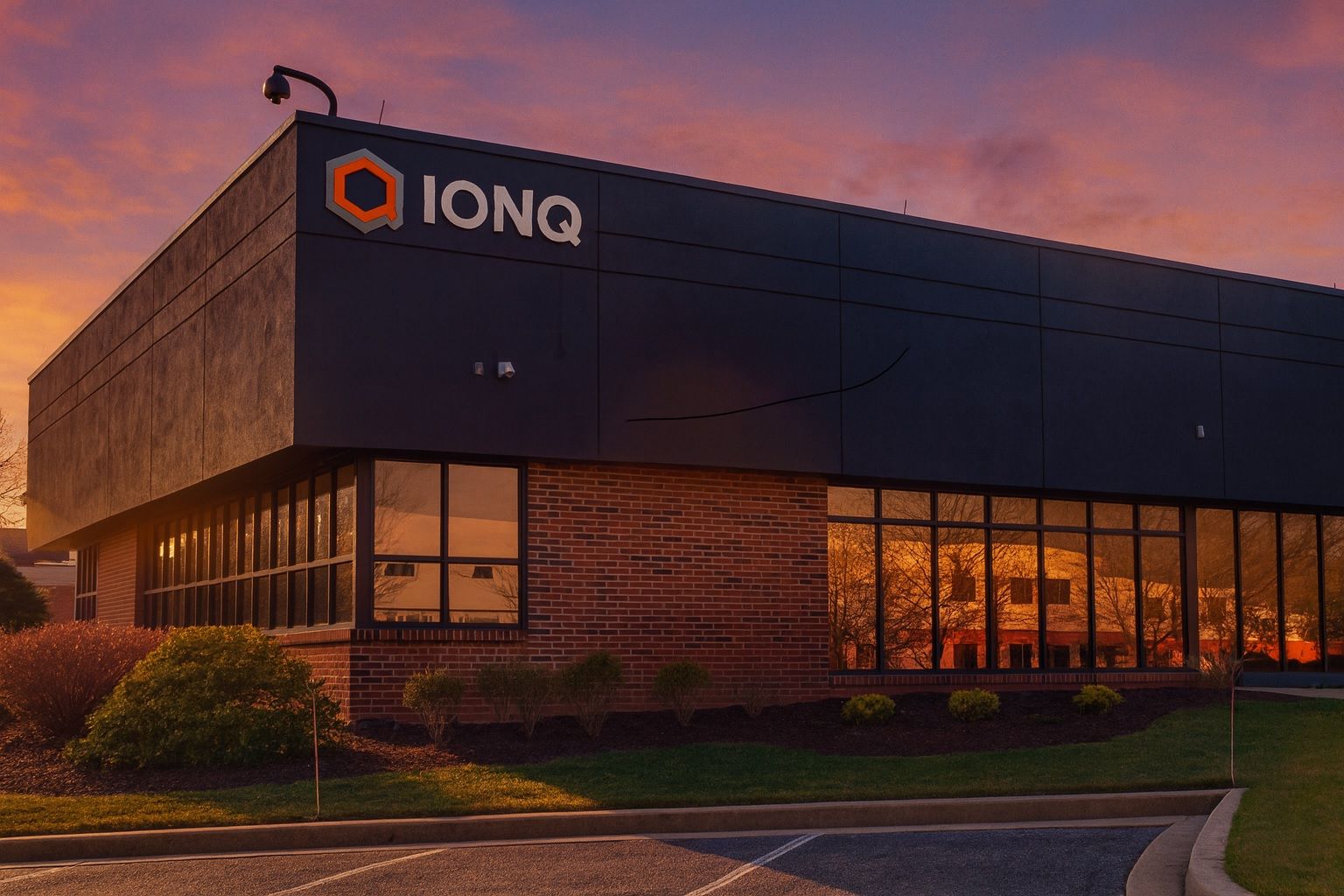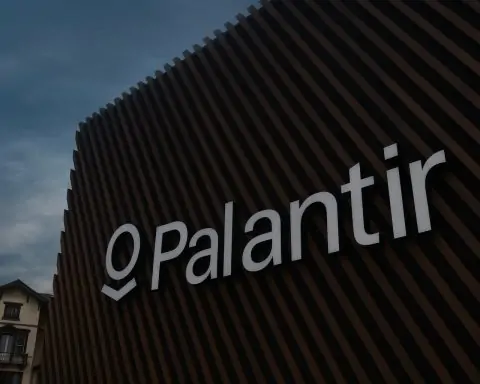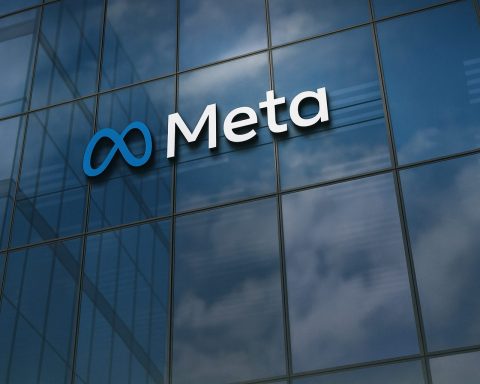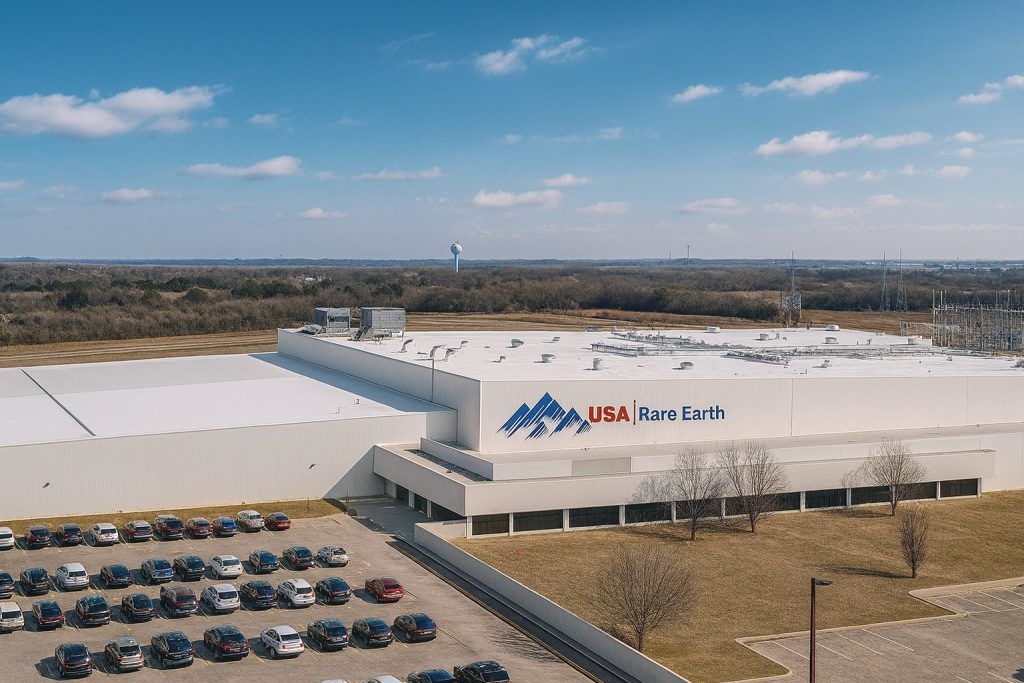- Stock Surge: IonQ’s share price has exploded in 2025 – trading near all-time highs (~$73–$75 in early October) after jumping roughly 70–75% year-to-date and an astonishing 700%+ over the past 12 months [1] [2]. This rally has lifted IonQ’s market cap to about $20–22 billion [3], valuing it like a mid‑cap tech company despite still-tiny revenues.
- Major Deals & Acquisitions: IonQ has been aggressively buying and partnering. In October it announced a strategic investment in Swedish autonomous-trucking startup Einride (joining Einride’s $100M funding round) – news that sent IonQ shares up ≈10% in one day [4]. The company also acquired UK-based Oxford Ionics ($1.08B deal for novel “ion-trap-on-a-chip” tech) and California’s Vector Atomic (advanced quantum sensing) this year [5] [6]. Other recent deals include Lightsynq, Capella and a stake in ID Quantique, building out IonQ’s quantum computing, networking and sensing platform.
- Breakthrough Tech: IonQ has reported several technical milestones. In mid-2025 it teamed with NVIDIA and AWS to simulate a drug-discovery problem 20× faster than before [7], demonstrating quantum-accelerated chemistry. The company also achieved an algorithmic qubit score of #AQ 64 – outpacing IBM’s systems in key metrics [8]. Notably, IonQ converted trapped-ion qubit emissions to telecom-band photons for the first time [9], a breakthrough that could enable quantum machines to link over standard fiber (“quantum internet”). Each of these advances was touted as a step toward commercial quantum applications.
- Financial Snapshot: IonQ remains unprofitable but growing. Q2 2025 revenue was $20.7 million (up 82% year-over-year), beating guidance [10]. Management raised full-year 2025 sales guidance to $82–$100M [11] (vs. just ~$11M in 2022). However, heavy R&D and one-off charges meant a $177.5M net loss in Q2 [12]. To fund expansion, IonQ sold stock in mid-2025, raising $1.0 billion. The company now holds roughly $1.6B cash on its balance sheet [13]. Analysts note IonQ’s revenue has been doubling annually, but from a small base, and it still “operate[s] at a net loss” [14]. CEO Peter Chapman targets profitability by 2030 (with ~,$1B annual sales by then) [15], implying the company must sustain rapid growth.
- Analyst Ratings & Sentiment: Wall Street is divided. A MarketBeat survey shows analysts’ consensus 12-month price target around $58.33, implying downside from current levels [16]. Some research firms are bullish – e.g. B. Riley lifted its target to $100 (Buy rating) and Needham to $80 [17] [18] – while others are cautious. Weiss Ratings recently reiterated a “sell (D-)” rating on IONQ [19]. In short, IonQ’s valuation now exceeds fundamentals, so many experts warn the stock is highly volatile. Indeed, Barron’s observers noted quantum names (IonQ, Rigetti, D-Wave) have seen ~4× stock gains on “limited” revenue, and this “bubble may keep inflating until it is tested by fundamentals” [20] [21]. McKinsey, by contrast, projects the quantum market could grow from ~$1 billion in 2025 to $72 billion by 2035 [22] – a huge future opportunity that investors are banking on, despite today’s uncertainties.
- Sector Context: IonQ is the largest pure-play in a broader quantum frenzy. Peers Rigetti (NASDAQ: RGTI) and D-Wave (NYSE: QBTS) have also soared (Rigetti ~+2400%, D-Wave ~+2000% YOY [23]). IonQ’s ~$20B market cap roughly doubles those of Rigetti and D-Wave [24]. Yet even collectively, publicly traded quantum companies are tiny – ~$35–40B total market cap [25]. In other words, today’s “quantum boom” is still in its infancy. Observers caution that valuations are sky-high compared to current revenues – some call it a speculative bubble – even as big-tech and government backers pour money in, betting on long-term quantum breakthroughs [26] [27].
IonQ’s Quantum Computing Push
IonQ is known for its trapped-ion quantum computers – machines that use charged atoms (ions) manipulated by lasers instead of semiconductor chips. This approach yields qubits with extremely high fidelity (reported ~99.9% accuracy per operation) and full all-to-all connectivity [28], which helps reduce errors. IonQ’s systems (e.g. the 35‑qubit “Forte”) run at room temperature and are accessible via cloud platforms like AWS Braket, Microsoft Azure Quantum and Google Cloud [29]. The company has broadened its focus beyond computing to networking and sensing as well. In the last year IonQ announced control of over 1,000 quantum patents (including its recent acquisitions) [30], underscoring its ambition to dominate the field. CEO Niccolo de Masi has emphasized that IonQ aims to build an “integrated quantum platform” spanning computing, networking and even sensing [31].
Recent strategic moves exemplify this. In June 2025 IonQ agreed to acquire Oxford Ionics (UK), a specialist in “ion-trap-on-a-chip” tech that could greatly scale ion-qubit counts [32]. Shortly thereafter (Oct 7) IonQ closed its Vector Atomic acquisition, adding precision atomic clocks and inertial sensors to its lineup [33] [34]. Vector Atomic’s tech (used in submarines, space, etc.) expands IonQ into quantum navigation and timing, and even bolsters its patent portfolio (adding ~29 patents) [35] [36]. Niccolo de Masi hailed the Vector deal as “an exciting expansion” toward “fully integrated quantum systems” with “real-world impact” [37]. In all, IonQ’s M&A spree (also including Lightsynq, Capella, Qubitekk, etc.) builds out a full-stack quantum ecosystem – from hardware to algorithms.
Breakthroughs and Partnerships
On the technology front, IonQ has touted several breakthrough demonstrations. In June 2025 it announced a collaboration with AstraZeneca, NVIDIA and AWS that used its Forte quantum processor (35 qubits) integrated with NVIDIA’s CUDA-Q and the AWS cloud. Together they ran a pharmaceutical simulation (the Suzuki-Miyaura drug reaction) in a hybrid quantum-classical system. The result: over 20× speed-up in time-to-solution compared to classical methods [38]. As CEO de Masi put it, “we are turning months into days” for drug simulations, a shift that he says “can save lives” by greatly accelerating discovery [39] [40]. This work is framed as proof that practical quantum advantage in drug R&D is on the horizon.
Another milestone: IonQ converted its trapped-ion qubit’s emitted light from ultraviolet to telecom wavelengths [41]. This enables quantum data to travel over standard fiber cables, a key step toward a “quantum internet.” Such networking potential – along with continued improvements in qubit count and fidelity – suggests IonQ sees use cases in logistics, cryptography, and distributed computing.
IonQ is also cultivating partnerships and customer deals. It sells quantum computing time to companies and research labs (five IonQ systems have been delivered so far) [42]. Notably, Amazon (AWS) and even the U.S. Department of Energy are deepening ties. AWS invested $36.7M in IonQ, signaling cloud vendors’ confidence [43]. The DOE’s Quantum Network (Project QIS) recently included IonQ alongside Honeywell and others to explore space-based quantum applications [44]. And IonQ’s portfolio of government contracts reportedly exceeds $200M (including defense and aerospace projects), making it a major national-security player [45].
Stock Performance & Market Reaction
Investors have poured into IonQ stock on this news flow. After languishing near $1–$5 per share in 2021-22, 2023–2025 brought a parabolic rise. By early October 2025, IonQ shares were in the mid-$70s, up roughly 70% just in 2025 [46] (and about 10× higher than late 2022) [47]. In fact, mid-2025 secondary offerings raised new capital at ~$93 per share – a 20% premium to pre-offer prices [48] – further vindicating investor enthusiasm.
Key catalysts in late Sept and early Oct fueled buying. The vector atomic and Fortune 50 announcements (see below) and the Einride investment were all positive triggers [49] [50]. For example, when IonQ revealed its stake in Einride (an $100M autonomous trucking fundraise), the stock jumped about 10% [51] [52]. On Oct 10, however, IonQ shocked with a $2.0 billion stock offering (16.5M shares at $93) to fund growth [53]. While management framed this as “the largest common-stock single-institutional investment in [quantum] history” [54], such large share issuance has injected volatility. Indeed, MarketBeat noted IonQ stock fell ~6% following that deal (trading down to ~$74 on Oct 9) [55].
Still, the long-term momentum remains strong. After the recent dip, IonQ still trades near record territory. The company now boasts a ~22B market cap [56], with its stock having more than doubled in 2023 and climbed sharply in 2025 [57]. For perspective, IonQ’s valuation is about double that of peer pure-plays like Rigetti or D-Wave [58], despite IonQ’s much larger (though still small) revenues. The intense demand from investors – including hedge funds and retail traders – reflects expectations that IonQ’s heavy R&D and dealmaking will pay off in big future growth.
Analysts & Market Sentiment
Wall Street experts are divided on IonQ. Many analysts have upgraded targets recently, but the consensus view is cautious. According to MarketBeat, seven analysts rate IONQ a “Buy” but five say “Hold” and two “Sell,” yielding an average price target of only $58.33 [59] – well below today’s trading range. Notably, B. Riley increased its target to $100 (Buy) and Rosenblatt to $70 [60], while Cantor Fitzgerald and Benchmark raised theirs to ~$60–75 [61]. Conversely, Weiss Ratings reiterated a “sell (D-)” rating on Oct 9 [62], citing the stock’s bubble-like run. Some observers view IonQ’s price action as disconnected from fundamentals: as a TipRanks summary of Barron’s put it, IonQ and peers have surged despite “limited revenue” and may be in a bubble “until… tested by fundamentals” [63].
In summary, analysts warn the current valuation is built on future promise rather than current results. They note IonQ’s Q2 beat on sales (up 82% YoY) and big pipeline, but also highlight ongoing losses. The average sell-side target in the $50s suggests many believe the stock could pull back unless the company continues smashing expectations. As one commentator noted, the recent rallies in quantum stocks are “highly speculative” since the fundamentals are still nascent [64].
Quantum Computing Sector Outlook
The recent frenzy reflects broader enthusiasm for quantum tech. Governments (US, EU, China, etc.) and tech giants (Google, IBM, Microsoft) are all investing heavily, betting quantum will be as transformative as AI. Consulting firms forecast huge growth – McKinsey’s $72B by 2035 estimate [65] – and if achieved, IonQ stands to benefit as a pure-play. The market still expects the first wave of real-world quantum use cases to emerge in this decade, especially in drug discovery, materials, cryptography and logistics – areas IonQ is targeting.
However, commercialization is still early. Today’s quantum machines solve toy problems while classical computers reign for most tasks. That’s why many experts urge caution: the rally could unwind if technical progress plateaus or if competing technologies (superconducting qubits, photonic systems, etc.) leap ahead. Investors are essentially betting on 2025–2030 being a critical period where IonQ either proves out its roadmap (2 million qubits by 2030 is the company’s target) or else lags behind.
Outlook and Forecast
What’s next for IonQ? In the near term, the company will deploy its fresh cash to execute on the ambitious roadmap: launching its next “Tempo” system (late 2025), integrating the new assets (Oxford Ionics, Vector Atomic) into its product line, and landing enterprise/government contracts. Analysts will watch its Q3 and Q4 results closely for revenue growth trends and any narrowing of losses.
Stock-wise, IonQ may trade on a “buy the rumor, sell the news” cycle – spiking on breakthroughs and dipping on dilution announcements. If its technology continues to impress (e.g. more proof-of-concept demos, new customers), bullish forecasts could be validated. Needham and B. Riley clearly think so – raising targets to $80-$100 [66] [67]. On the other hand, broader market fluctuations or a shift in sentiment (e.g. fading hype) could cap gains, in line with conservative targets around $50–60.
Longer term, if IonQ hits its 2030 goals, today’s investors would look like early pioneers in a new era of computing. But if quantum’s promise remains distant, the stock’s lofty valuation could suffer. As one expert cautioned, these are “high-risk, high-reward” bets: setbacks could send IonQ back to earth, while successes could make early backers “a ton of money” [68].
Sources: Latest company reports and press releases (IonQ, BusinessWire) and market analyses [69] [70] [71] [72], financial news (TS2.tech, Motley Fool, Reuters, TipRanks) [73] [74] [75], and stock data (MarketBeat, StockAnalysis) [76] [77]. These sources detail IonQ’s recent stock moves, financials, technology milestones, and expert commentary.
References
1. ts2.tech, 2. ts2.tech, 3. ts2.tech, 4. ts2.tech, 5. ts2.tech, 6. www.businesswire.com, 7. thequantuminsider.com, 8. www.businesswire.com, 9. ts2.tech, 10. ts2.tech, 11. ts2.tech, 12. ts2.tech, 13. ts2.tech, 14. ts2.tech, 15. ts2.tech, 16. www.marketbeat.com, 17. www.marketbeat.com, 18. ts2.tech, 19. www.marketbeat.com, 20. www.tipranks.com, 21. ts2.tech, 22. ts2.tech, 23. ts2.tech, 24. ts2.tech, 25. ts2.tech, 26. ts2.tech, 27. ts2.tech, 28. ts2.tech, 29. ts2.tech, 30. ts2.tech, 31. www.businesswire.com, 32. ts2.tech, 33. www.businesswire.com, 34. www.businesswire.com, 35. www.businesswire.com, 36. www.businesswire.com, 37. www.businesswire.com, 38. thequantuminsider.com, 39. thequantuminsider.com, 40. thequantuminsider.com, 41. ts2.tech, 42. ts2.tech, 43. ts2.tech, 44. ts2.tech, 45. www.businesswire.com, 46. ts2.tech, 47. ts2.tech, 48. markets.ft.com, 49. ts2.tech, 50. www.businesswire.com, 51. ts2.tech, 52. thequantuminsider.com, 53. markets.ft.com, 54. markets.ft.com, 55. www.marketbeat.com, 56. www.marketbeat.com, 57. ts2.tech, 58. ts2.tech, 59. www.marketbeat.com, 60. www.marketbeat.com, 61. www.marketbeat.com, 62. www.marketbeat.com, 63. www.tipranks.com, 64. ts2.tech, 65. ts2.tech, 66. ts2.tech, 67. www.marketbeat.com, 68. www.nasdaq.com, 69. ts2.tech, 70. ts2.tech, 71. markets.ft.com, 72. www.businesswire.com, 73. ts2.tech, 74. www.nasdaq.com, 75. www.tipranks.com, 76. www.marketbeat.com, 77. stockanalysis.com







